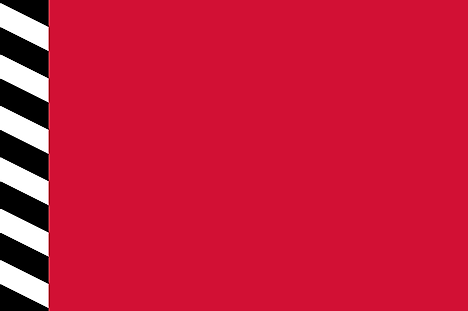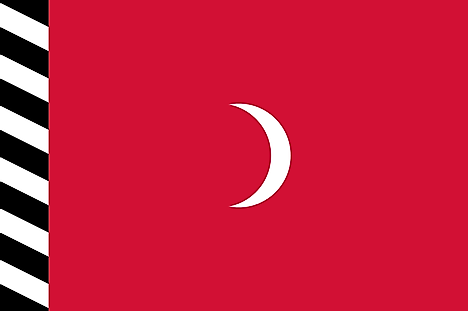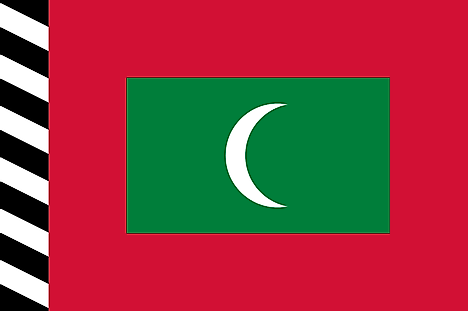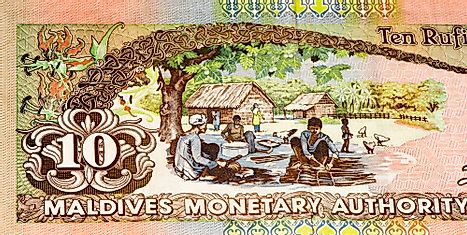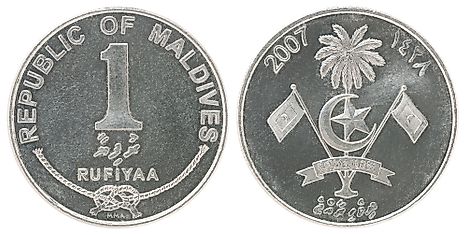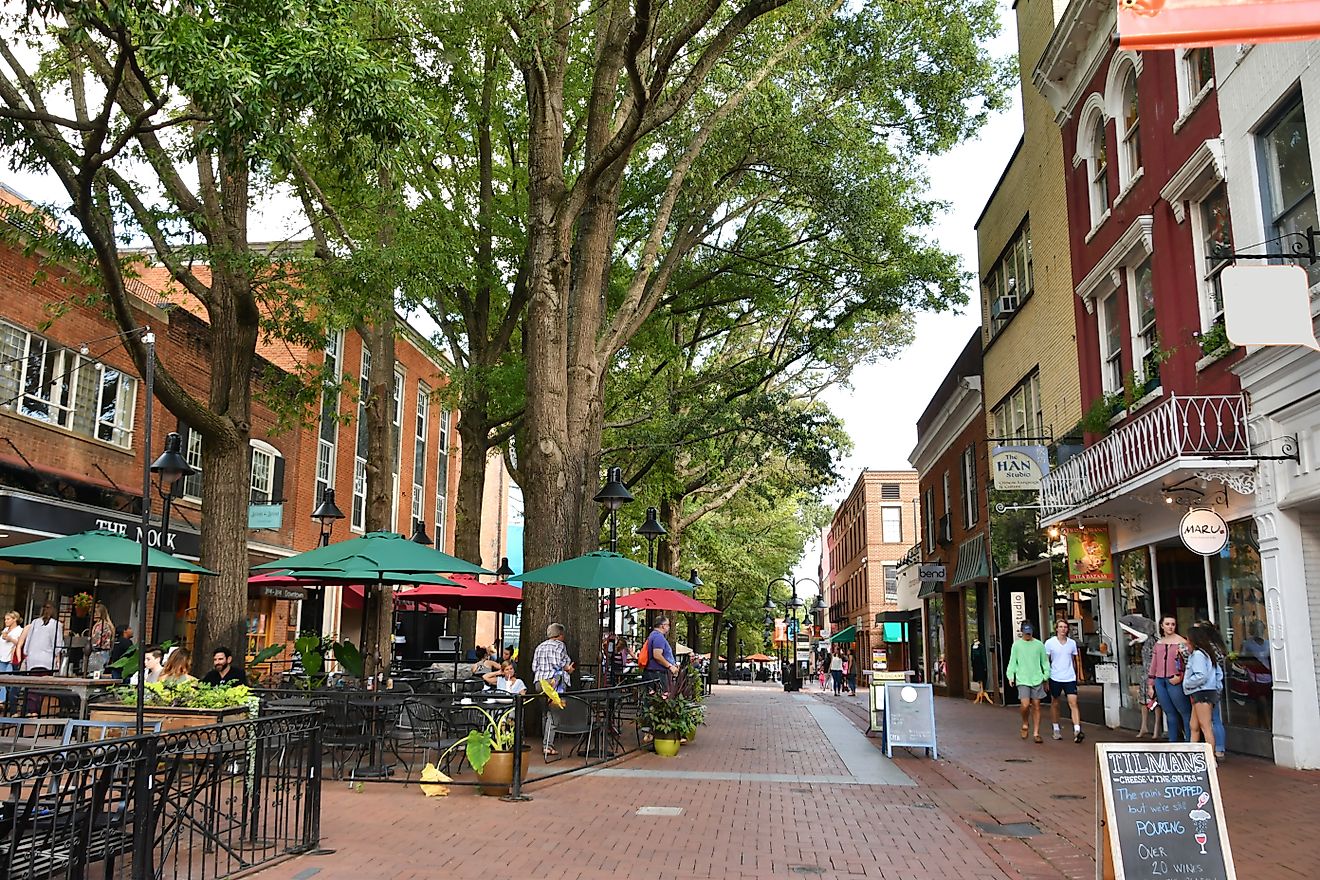Flags, Symbols, & Currencies of Maldives
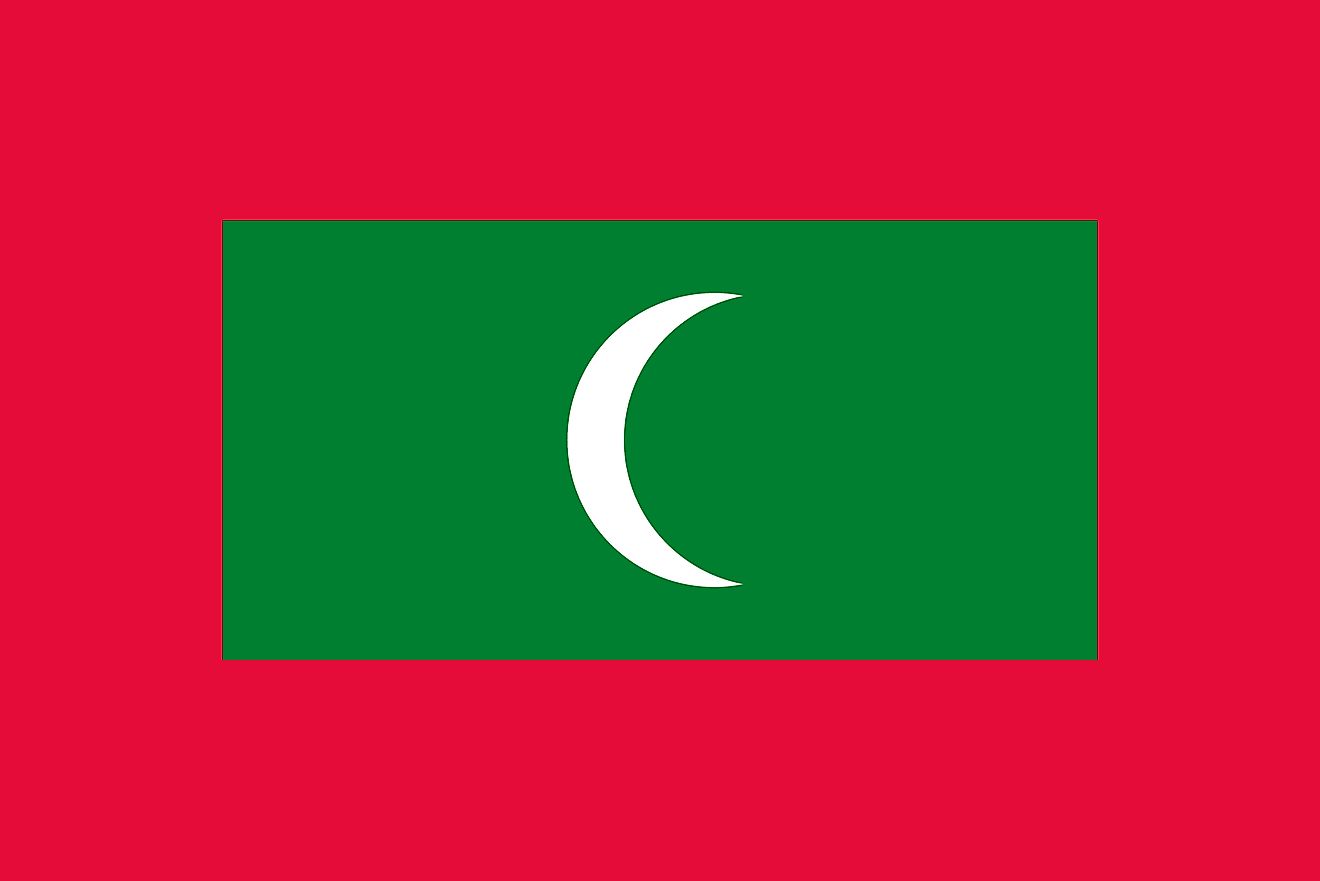
The Maldives flag was officially adopted on July 26, 1965, to replace the modified flag adopted at independence in 1953. The flag consists of a red field with a large green rectangle in the middle bearing a vertical white crescent moon whose closed side faces the hoist side. The red and green are significant and important colors to the people of Maldives. Red repreents the national heroes who have sacrificed their lives in defense of their country. It also represents the people's willingness and readiness to sacrofoce and defend their country. The green rectangle represents peace and prosperity, two important virtues that the Maldives strive for. Finally, the white crescent inthe middle of green rectangle represents Islam, the predominant religion in the country. The national flag has a height to length proportion of 2:3.
History of the Flag of Maldives
Red has always been the color of Maldives since the 12th century. The first flag of Maldives, used between 1117 and 1796, consisted of two red triangles. The flag used between 1796 and 1903 was a plain red flag. Later, white and black stripes were added on the hoist side of the red flag. This flag design was used from 1903 to 1926. In 1926, Sultan Abdul Majeed Didi added a white crescent to the flag. When Maldives became a republic in 1953, a green field with the white crescent was added to the red field. However, the crescent was reversed in 1954 so that its clossed edge faced the hoist side. The current flag was adopted in 1965, with the only change to the old flag being the doing away with the black and white stripes on the hoist edge.
Maldives Coat of Arms:
Symbols of Maldives
National Coat of Arms of Maldives
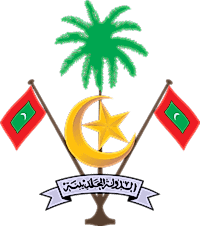
The Maldivian National Emblem features four elements that are portrays the country's belief and what it stands for. The emblem consists of a coconut palm tree with two flag posts bearing the national flag criss-crossing at the foot (making a V). A golden crescent and its accompanying five-pointed star rests between the flag posts. Below the crescent is a gray scroll with the words "State of the Mahal Dibiyat" written in Arabic. The coconut tree represents the traditional source of livelihood of the people of Maldives.
National Anthem
- Anthem Title: Qaumee Salaam (National Salute)
- Music composer: Pandith Amaradeva
- Lyricist: Mohamed Jameel Didi
- Date of Adoption: 1972
Qaumee Salaam (National Salute) is the title of Maldives' national anthem. Although it was adopted as the country's anthem in 1972, the lyrics were written as early as 1948 by Mohamed Jameel Didi. Before 1948, the royal band performed a melody known as "Salaamathi" during state occassions. However, in 1948, it was decided that lyrics accompanying the melody be written. Jameel's lyrics were influenced by the Urdu poetry. Later, Maldivian saw the need for a national anthem. In 1972, just before Queen Elizabeth II visited the country, the government requested Pandith Amaradeva to compose a new melody for the anthem based on the original lyrics. The new melody was effectively adopted the national anthem of Maldives.
Qaumee salaam
Qaumee mi ekuverikan mathee thibegen kureeme salaam.
Qaumee bahun gina heyo dhuʽaa kuramun kureeme salaam.
Qaumee nishaanah hurumathaa eku boala'nbai thibegen,
Audhaa nakan libigen e vaa dhidha ah kureeme salaam.
Nasraa naseebaa kaamiyaabu ge ramzakah himeney,
Fessaa rathaai hudhaa ekee fenumun kureeme salaam.
Fakhraa sharaf gaumah e hoadhai dhevvi bathalunnah,
Zikraage mathiveri lhenthakun adhugai kureeme salaam.
Dhiveheenge ummen kuri arai silmaa salaamathugaa,
Dhiveheenge nan molhu vun adhai thibegen kureeme salaam.
Minivankamaa madhaniyyathaa libigen mi ʽaalamugaa,
Dhinigen hithaama thakun thibun edhigen kureeme salaam.
Dheenaai verinnah heyo hithun hurumay adhaa kuramun,
Seedhaa vafaatherikan mathee thibegen kureeme salaam.
Dhaulathuge aburaa ʽizzathaa mathiveri vegen abadhah,
Audhaana vun edhi heyo dhuʽaa kuramun kureeme salaam.
National Salute
We salute you, o Motherland, in unity
With an abundance with well-wishes in our very own tongue
Bowing our heads to your crescent moon and star
With our bright colours streaming in the air, we hail our buoyant flag.
Victory and good fortune be its alone
We salute the mighty red, white and green;
To those heroes who sought out honour and pride for the nation
We give salute today in auspicious verses of remembrance.
May there be fame and good weal for Maldivia land
And Maldivians' name become grand
We wish for their freedom and progress in this world
And for their freedom from sorrows, and thus we salute.
With full respect and heartfelt blessing towards religion and our leaders,
We salute you in uprightness and truth.
May the State ever have auspicious honour and respect.
With good wishes for your continuing might, we salute you.
The Currency of Maldives is the Maldivian Rufiyaa
The Maldivian rufiyaa is the official currency of Maldives, adopted in 1960. Its name is derived from Sanskrit “rupya,” which means "wrought silver." The Maldivian rufiyaa carries the sign Rf and the code MRF, and is subdivided into 100 laari. The country's central bank, the Maldives Monetary Authority, is the only institution allowed to control the currency.
Banknotes
The notes in denominations of ½, 1, 2, 5 and 10 rufiyaa were printed and circulated in September, 1948. The 50 and 100 rufiyaa notes were introduced in 1951, while the 500 rufiyaa note was first issued in 1990. Currently, notes used in the Maldives are available in denominations of 5, 10, 20, 50, and 100 rufiyaa. In order to commemorate the 50 years of Maldives independence in October 2015, the Maldives Monetary Authority released the 5,000 rufiyaa note.
Coins
The coins used today were first introduced in 1960 by the then Sultan Fareed I who ordered them from England. Sultan Fareed embellished the national emblem and the Arabic title of the Maldiveson on the reverse of the coins. The coins were in denominations of 1, 2, 5, 10, 25, and 50 laari and started being circulated in the year 1961. Five years later, all previously traded coins were removed from circulation. In 1983, the Maldives Monetary Authority struck the 1 rufiyaa coin. The coin was produced in from West Germany and made of copper-nickel. In 1995, the 2 rufiyaa coins were first minted. The coins currently used in the Maldives are in denominations of 1, 2, 5, 10, 25, and 50 laari, and 1 and 2 rufiyaa.
Historical Currencies of Maldives
Historical reports and evidence show that during the 13th century cowry shells were used as a form of currency in the Maldives. Arab merchants, like Ibn Batuta, exported many ships loaded with cowry shells. Larin, which were half straps of silver wire put together and dyed, were used as means of exchange in the Maldives, areas around the Persian Gulf, and India since they all traded together.
Mohamed Thakurufaanu Al Auzum was the first leader in the history of the people of Maldives to imprint his seal on their currency. In addition, between 1648 and 1687, the (then) Sultan Ibrahim Iskandar brought coins to the Maldives as a form of exchange. The coins were minted in Malé, the capital and most populated city of Maldives. They were made of pure silver. In 1787, coins were made of gold, and between the 18th and 19th century coins were made of bronze. Researchers strongly believe that between 1900 and 1904, Sultan Imaadhudheen introduced the first machine ever to strike coins in the Maldives. It was also under his leadership that the last of these coins were minted in Birmingham, England in 1913. Subsequently, Maldivians started using the Ceylonese rupee and the rufiyaa as their currency in 1960.

